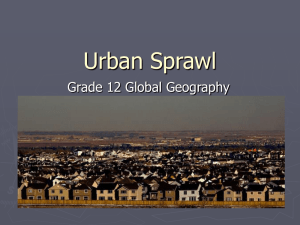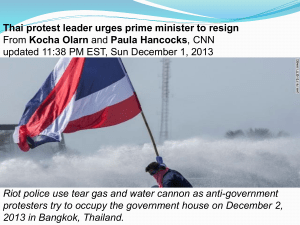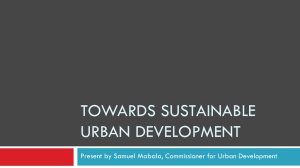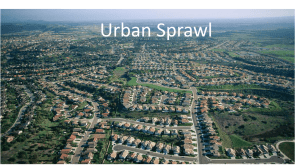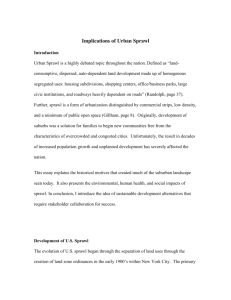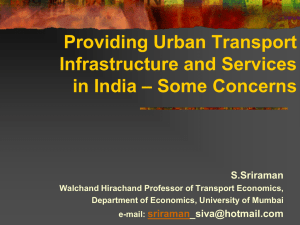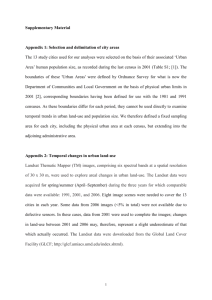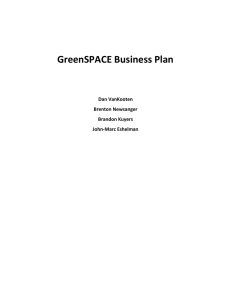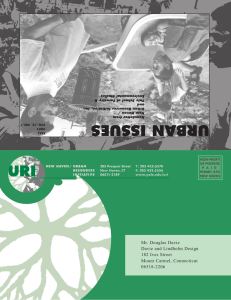Land Use - City Planning
advertisement
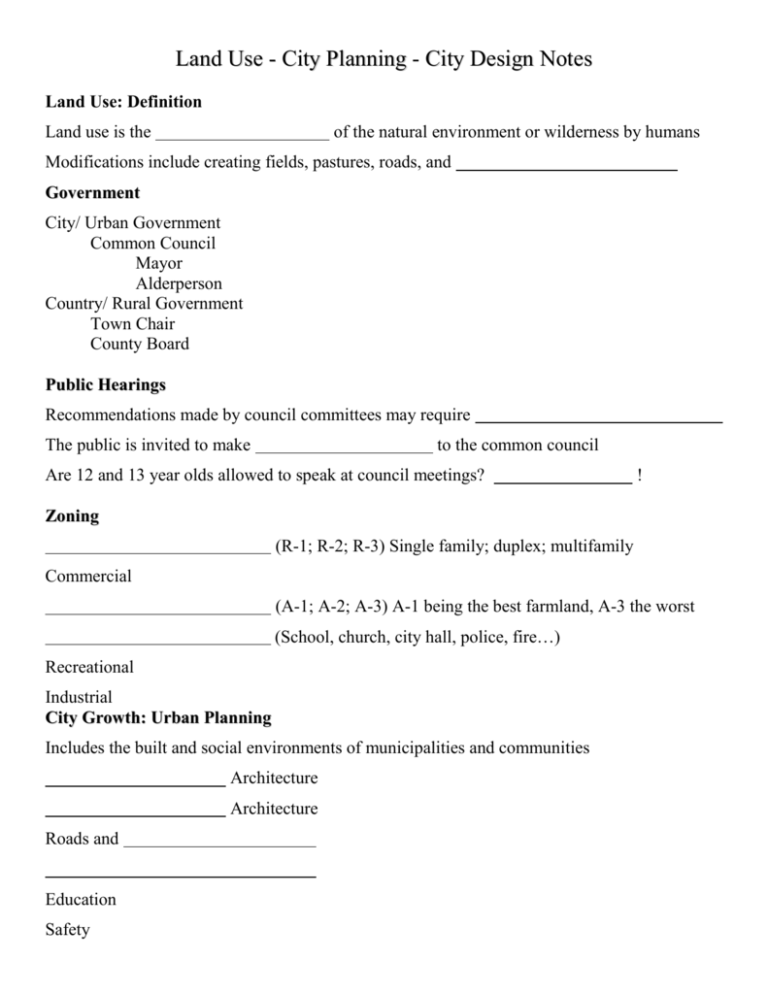
Land Use - City Planning - City Design Notes Land Use: Definition Land use is the of the natural environment or wilderness by humans Modifications include creating fields, pastures, roads, and Government City/ Urban Government Common Council Mayor Alderperson Country/ Rural Government Town Chair County Board Public Hearings Recommendations made by council committees may require The public is invited to make to the common council Are 12 and 13 year olds allowed to speak at council meetings? ! Zoning (R-1; R-2; R-3) Single family; duplex; multifamily Commercial (A-1; A-2; A-3) A-1 being the best farmland, A-3 the worst (School, church, city hall, police, fire…) Recreational Industrial City Growth: Urban Planning Includes the built and social environments of municipalities and communities Architecture Architecture Roads and Education Safety Eminent Domain Eminent domain gives the the right to possess all property within the state It was intended to only take property for public use (roads, utilities) However it recently has been businesses like shopping malls to take land for commercial Annexation It’s the process that parcels of land from smaller towns to cities For cities it’s a way to Towns lose population, territory, and If it’s not done thoughtfully, it can lead to for the city America- Building for the Automobile One in Eight ( %) jobs in the U.S. is directly related to transportation 440,000 public school buses transport children each day % of all petroleum used in the US is for transportation More Transportation Facts In 2006 there were 8,371,718 miles of That equals almost in the U.S. (US DOT) SQUARE MILES of land used just for roads This does not include ! land area is 54,310 sq miles Automobiles have changed the landscape Paving land means that water can’t into the ground water That water is funneled into lakes and rivers via This can destroy organisms Watertown gets about inches of precipitation annually Let’s put that in Perspective… A parking lot is 50 feet by 100 feet The area = sq feet; times 12 equals 60,000 sq inches Times 30.88 inches of precipitation Equals 1,852,800 of water; divided by 12 equals 154,400 cubic feet; divided by 3 equals 51,466.666 cubic yards of water That’s 10,396,065.03 from that one parking lot in Floodplains against flooding Sprawl in Watertown Many of the commercial buildings on are built on filled-in floodplain The drive-thru for Rocky Rococo’s into the river 1 week after it opened Now that there is no , where will the water go after a flood? We can’t keep allowing this kind of development without Sustainability Sustainability is a characteristic of a process or state that can be certain level indefinitely at a Sustainable Development Stephen Wheeler: “Development that improves the ecological health of cities and towns." social and Why consider Sustainability? development creates many problems: Overuse of Ecosystem/ Natural Habitat Urban and climate change Pollution Growing inequality in cities ( ) Poor living conditions & How can quality of life be made better? Greenspace Greenspace provides for people living in urban areas are multi-functional and are used by many different people for many different things It can help deter They also offer habitat for Urban Sprawl Urban growth without central planning and control becomes It often starts by building along main Sprawl is made worse by development like strip malls Provides high for advertising Sprawl Costs Us All Allowing sprawl costs more than careful planning and development Cities must provide new water and sewer) to serve a dispersed population (schools, roads, police, fire, gas lines, These costs are more than the city gets back in revenue All infrastructure eventually needs Sprawl development forces more Driving to work and to the store means we spend more on and car maintenance spend less time together Smart Growth includes a convenient blend of residential and commercial Smart Growth is It allows choices of or to destinations Conservation Design is well known designer http://www.landchoices.org/docfilm/arendt_clip1.htm Controlled-growth land use that adopts the principle that ‘ knows best’ Allows sustainable development while protecting the area’s natural features in Includes preserving open space and vista, Maintains the farmland and natural habitats character of rural communities Typical Development Homes on Large Lots Conservation Design Smaller lots with more Greenspace Common Greenspace requires a change in thinking We need to move past the idea of exclusive , to some extent We adopt a philosophy that sharing these spaces is best for everyone, not just those that can afford large lots Riverwood Subdivision Project Role Play- Zenith Council meeting is the oldest part of the large city Zenith Zenith has a population of The following arguments are from past student responses: Pro-Development Less poverty Better transportation/ more efficient More things to do; more skate parks, etc. Improved technology Sustain professional sports City can grow better if we start over ABC will pay to relocate residents More money for parks Proposal can change if needed Modern buildings are cool More police- safer Better education; more schools Modern buildings- energy efficient Less welfare More sports for kids Less dust from dirt roads New boat dock Marsh full of garbage Offer enough to bring Olympics to Zenith Taller buildings, less land used More tourism; more hotels, casinos Increased business connections Anti-Development View will be obstructed Landmarks destroyed Need to keep marsh for wildlife and flood control Children play in woods More air pollution with development More traffic = more accidents Pay more for insurance Higher taxes Less farmland if developed More noise pollution Transportation problems; traffic jams There is a petition against it More water pollution Not enough residential/ homes Poor land use Architecture not aesthetic More crime More poverty Too many people Buildings too close Not enough greenspace More maintenance/ cost Loss of quaintness More competition for jobs Gangs like bigger cities Waste disposal problems Less outdoor recreation Lose natural beauty Smaller community is family-oriented Not as peaceful Modern buildings look ugly More boats mean we can’t swim Won’t be able to fish Now what? Both sides have valid arguments We should be able to find sound to these problems Consensus Achieving consensus requires serious consideration of every opinion Your job is to create a proposal that finds a development and anti-development factions You will present your proposal orally between the pro-
